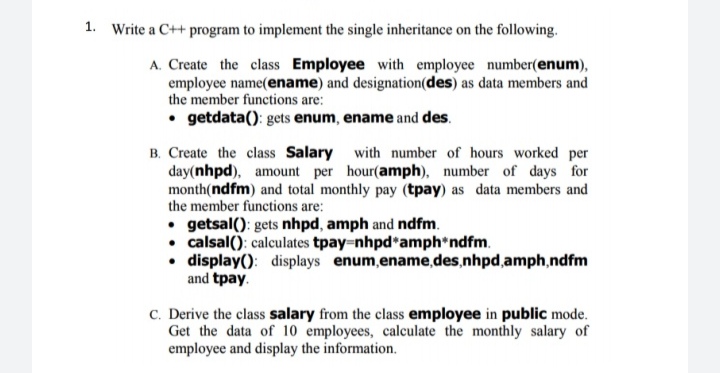
G.DrawImage(metafile, 0, 0, image.Width, image. Image = new Bitmap(metafile.Width, metafile.Height) Using (Metafile metafile = new Metafile(fileName)) IntPtr handle = CopyEnhMetaFile(pointer, fileName) String fileName = + Guid.NewGuid().ToString() + ".emf" Static extern bool DeleteEnhMetaFile(IntPtr hemf) Static extern IntPtr CopyEnhMetaFile(IntPtr hemfSrc, string lpszFile) Static extern IntPtr GetClipboardData(uint uFormat) Static extern bool OpenClipboard(IntPtr hWndNewOwner)

It's not the prettiest code, but it works, so for posterity here it is in all it's glory: But I managed to get it working using P/Invoke. The Clipboard.GetData(DataFormats.EnhancedMetafile) call seems to be broken. I saw this question posted but it did not help me much. I am at my wits end trying to figure this out. The data is stored as an EnhancedMetaFile and I can see the data in there but I cannot pull it out.

#GETDATA C++ CODE#
Write your code in this editor and press 'Run' button to compile and execute it.
#GETDATA C++ HOW TO#
Here you will learn how to write object value in file and how to access them. In this program, we will write and read values through object in/from text files. Var test4 = Clipboard.GetDataObject().GetData(DataFormats.EnhancedMetafile) Code, Compile, Run and Debug C++ program online. C++ program to write and read object using read and write function. Var test3 = Clipboard.GetData(DataFormats.EnhancedMetafile) Var test2 = Clipboard.ContainsData(DataFormats.EnhancedMetafile) Var test = Clipboard.GetDataObject().GetDataPresent(DataFormats.EnhancedMetafile) Here is my code: tempWorkSheet.Range, tempWorkSheet.Cells].CopyPicture(, ) The cells get copied to the clipboard fine, as I can paste the image manually after the code is run. If you have any doubts pls mention in the comment section below.I am copying cells from an excel document to the clipboard so they can be inserted as an image elsewhere. This is all about how dynamic memory allocation works in C++. Output: enter the size to call constructor and destructor:3 Now let us see, the syntax for new and delete operators.Ĭode: 1) simple code addition of two numbers with the help of dynamic memory allocation. New operator is used to allocating the memory and delete operator is used to deallocate the memory at the run time. C++ program for dynamic memory allocationĪs we know that in C++ programming language, we have two operators for dynamic memory allocation that is new and delete operator. Now let’s see how this dynamic memory allocation actually works with the help of a code. The daily life application of dynamic memory allocation is that: Suppose in a company number of employees strength changes every day, so to store that data at run time we can use dynamic memory allocation concept to store the employee’s data. C++ memory is classified into types that are stack and heap.ĭynamic memory allocation is nothing but allocating the memory in the run time, this done with the help of heap. But in C++ we have new and delete operators for doing this task.īefore we continue to the topic, we will see how memory is classified in C++. Read and return the length and width of a rectangle // Postcondition: the values of the two arguements are read void GetData(int& length, int& width) or // Purpose. Value parameters are used to pass information into a function. You can rate examples to help us improve the quality of examples. In C++, there are two types of function parameters: (i) value parameters, and (ii) reference parameters.

#GETDATA C++ FREE#
To use this tactic in C language we have different functions like calloc, malloc and free function. These are the top rated real world C++ (Cpp) examples of getdata extracted from open source projects. Hello Learners, today we are going to learn a very important topic in C++ that is “Dynamic memory allocation.


 0 kommentar(er)
0 kommentar(er)
